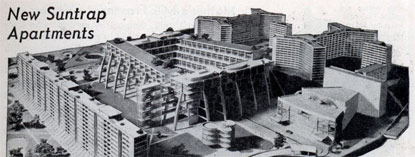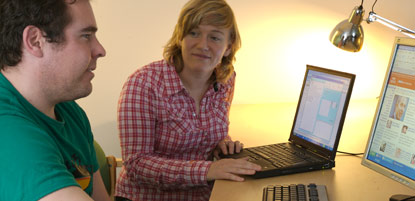Humans are not very good at predicting what will make us happy in the future. Designers need user centred design techniques to help them to overcome that limitation.
We don’t know what’s good for us
In Stumbling on Happiness, Harvard psychology professor Daniel Gilbert, describes recent research on “prospection” – the act of considering the future. Our ability to simulate future experiences is one of the things that makes us human. But our experience simulator (the pre frontal cortex) makes lots of mistakes. A key mistake is to imagine the future will be like the present.

For example, past visions of the future included rocket cars and jet packs, but usually the people’s behaviour didn’t change a bit. Mom still hung out in the kitchen, even though the work was being done by machines. And people lived happily in high-rise, concrete complexes. Today, retro-futuristic visions are more a quaint commentary on the time when they were made than a relevant description of the present.

On an individual level, we’re bad at predicting what experiences will make us happy in our own future. After finishing a delicious roast duck dinner at a favourite restaurant, I will be full and I will have “habituated” to the duck. So future duck dinners will not seem so appealing to me. If asked to pre-order for my next visit in a month’s time, I’m more likely to choose something other than duck. But when I arrive at the restaurant a month later, I am more likely to actually choose the duck again. When I made the choice about my future, I assumed it would be like my present, where I’d had enough of the duck. But when the future came, I was actually hungry – a frame of mind that I did not predict.
Methods for predicting the future
On a straightforward level, designers need to make this prediction: “What will people want to do with this product?” For example…
- Will people want to shop on my website by brand, price or by specification?
- Will people want to devote full attention to this mobile device or just glance at it?
- Will people want to watch a 30-second animated intro to my website?
- Will people want to click a button to clear all the data from a web form ans start again?
In all these real-life situations, the designers had to imagine future usage of their product and make decisions accordingly. A lot of them got things wrong, because they imagined that when using the finished product in the future they would be in the same frame of mind as when they were designing it.

Since we’re actually better at thinking about the present than the future, designers who want robust results need to bring the future into the present. In some respects, that’s what user centred design is.
- Ethnographic studies: Since target users are (usually) human they can’t predict accurately what will make them happy in the future. So it’s best to watch what people do instead. Study what makes them happy, and what unhappy moments you can address with design.
- Iterative prototyping: The future product isn’t finished yet. But make a mock-up of it and get target users to try it out. By simulating real usage, you’re simulating the future more accurately than you can imagine it.
- Scenarios and cognitive walkthroughs: Be methodical and write down what people’s future situations might be. Then you’ve got a better chance of predicting their future behaviour.
- Field trials: For particularly huge and life-changing ideas, your prototypes need to be a bit more solid. Leave them with a select few for a while and see what you get. For example, Microsoft’s SenseCam and whereabouts clock. Or Bill Gaver’s Flight tracker.

Making future happiness evident
Designers are often asked to design things that look desirable – that convince people to buy, rather than to deliver ongoing satisfaction. In a way, the user experience design movement has been about changing that: creating products that make people happy over time.
But since our customers can’t predict what will make them happy, they might buy the wrong thing. Something with lots of impressive-looking buttons, for example. So not only does the product have to make people happy, it has to look like it will make them happy.
One trick is to emphasise simplicity (which is what seems to make most people happy) as a feature. Sometimes it works.